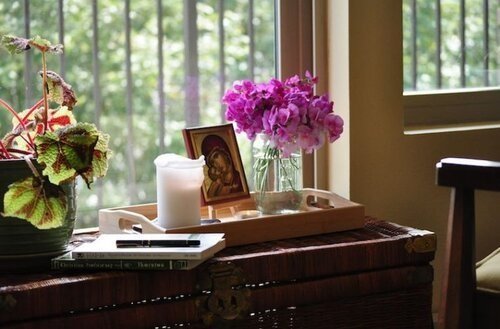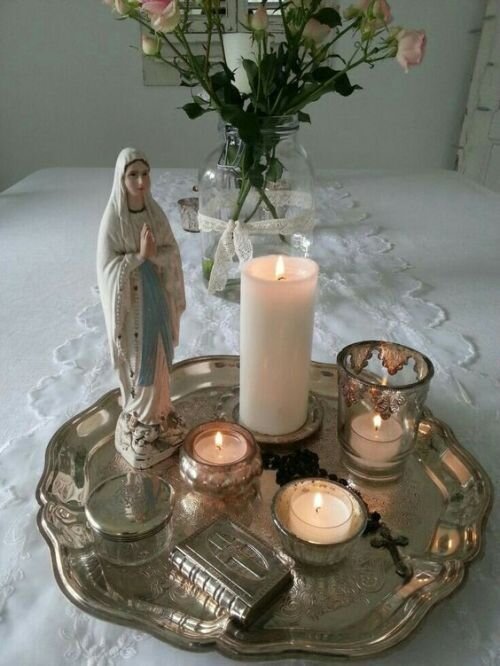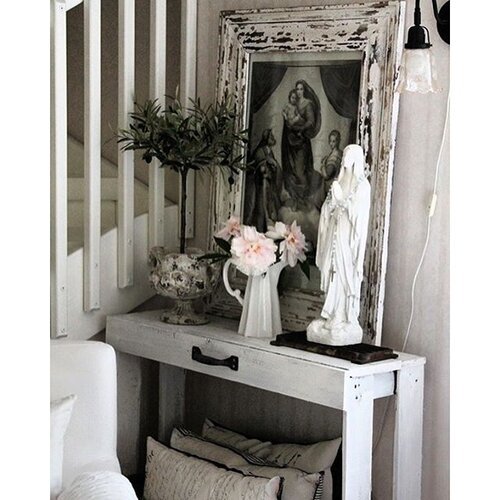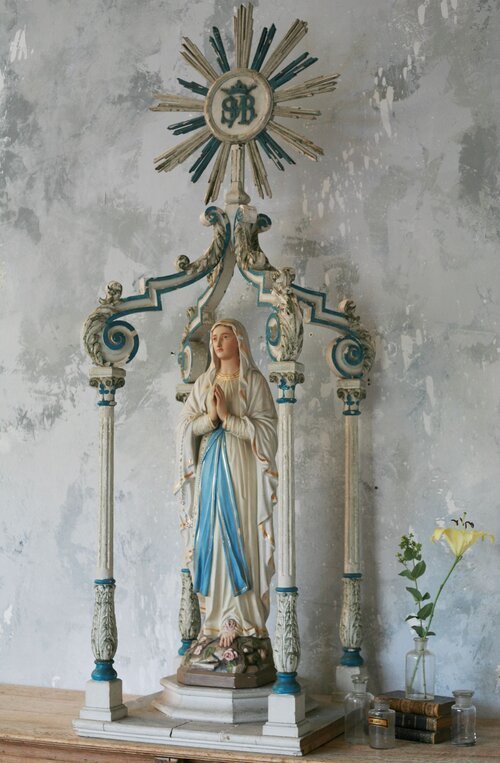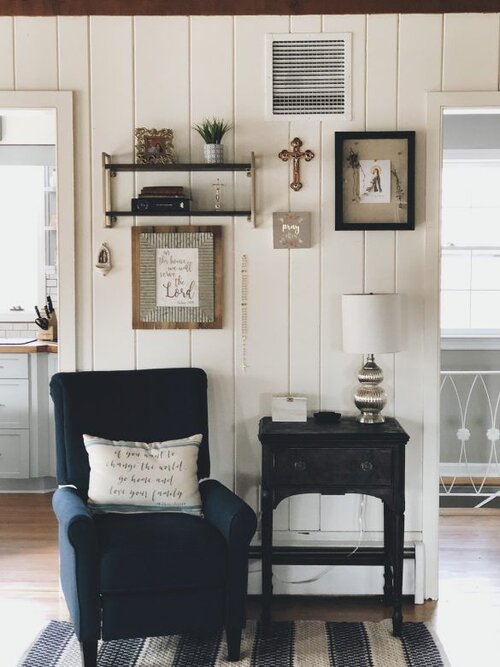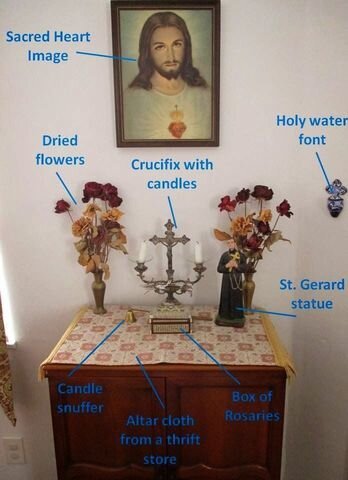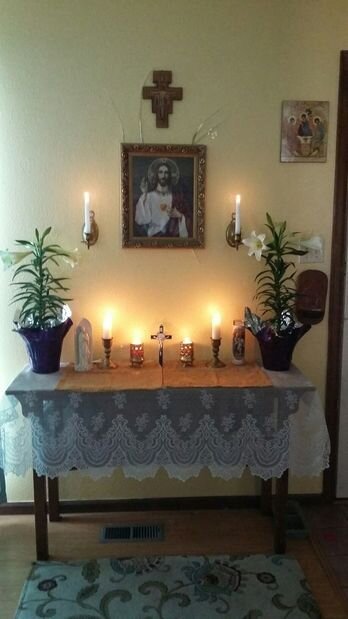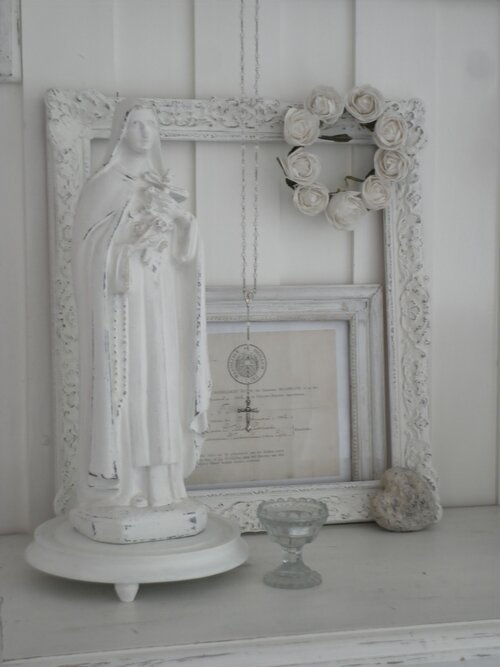Creating a Prayer Space in Your Home
CREATING A PRAYER SPACE
Creating a prayer space for your family is an opportunity to bring the true, the beautiful, and the good to your lives. For centuries the art and space of our parishes are the very means through which the knowledge, truth, and very life of God was transmitted to the faithful. As the faithful gathered together for opportunities of prayer and worship they would be enveloped with beautiful artwork depicting the truths of the scriptures, the lives of the saints, and the depictions of the grace of God being transmitted to humanity. “Authentic art is integral to the Church at prayer because these objects and actions are ‘signs and symbols of the supernatural world’ and expressions of the divine presence.“ (Built of Living Stones 146) Almost through osmosis the wisdom of God was engrained within the very minds and lives of the faithful. Even unto today my own family can enter some of the majestic and beautiful churches and my children will sit in awe, as if taken to another location, to the very height of heaven, and are engrossed with the knowledge of God they see. As we sit in the pews awaiting the beginning of the Heavenly Liturgy, they will turn to me and point out the knowledge they are gaining, talking about the saints and the life of Christ, or the scripture stories they see depicted. The space itself has become a means not only of catechesis, but truly an entering into another space and time of worship, they are elevated into a climate of prayer. The sacred spaces we create in our homes can truly be the opportunity to elicit the same reactions within our families.
The Cross must be central to any space of worship (BLS 144)
Utilize beautiful works of art, either in pictures or prayer cards
All items used within a prayer space should be of genuine, beautiful material
The layout of the prayer space should draw the attention of those praying toward elements of prayer. (Their eyes should be naturally drawn to the cross, an image, the name of Jesus, or something sacred.)
Images, cloths, colors, etc. should be traded out as necessary to reflect the seasons of worship in the Church.
In order for our families to be able to enter another space and time, to enter into a life of prayer and worship, prayer spaces can not be reduced to a place holder. If we become content to establish a corner table in our rooms with a colored table cloth, a candle, and a simple picture of Jesus, we may be selling our families short. The space must be usable by the family, both communally and individually, it must be a substantial space, yet set apart, and it must become a place of peace and a time of communion with God and the saints.
Prayer spaces need to be set aside, and not merely another piece of furniture, perhaps even an entire corner of a room.
Prayer spaces need to be a focus or prayer during communal times of prayer, students may all face the area and concentrate on a piece of art, or might even gather around the space, think of doing actions like taking off shoes as one approaches the space to signify the area as different.
Prayer spaces need to be able to be utilized individually as necessary, family members ought to have an opportunity to pray quietly, in or near the area; throughout the entirety of the day.
The prayer space must contain truth, it must be beautiful, and it must elicit the good of the one praying. As part of the space we must also look toward the very prayer we utilize in the space. Part of the environment of prayer is the very prayer itself. If we rush through a prayer, if we say it in a meaningless fashion, or if we place it as a distraction to the rest of what we do, we do not set forth an environment conducive to prayer. The prayer we choose for our family needs to elicit an age appropriate response to God’s love. Simple memorized prayers work for communal recitation, yet, our prayer time with the family ought to utilize those memorized prayers as a springboard into a deeper and more relational experience of prayer. “Thus, the life of prayer is the habit of being in the presence of the thrice-holy God and in communion with him.” (Catechism of the Catholic Church (2nd ed.). [CCC] [Washington, DC: Liberia Editrice Vatican - United States Conference of Catholic Bishops, 2000] 2565) Utilizing the depth of prayer found in liturgy, in Lectio Divina, in contemplating the face of Jesus, or in meditative prayers of the Rosary or chaplets will strengthen the depth of the prayer life of each of our family members, enabling them to know God in a relational way that will make all of our teaching more fruitful. You can find information on how to do these prayers and devotions on our website.
Adapted from Creating a Prayer Environment by Jamin Herold, Executive Director Parish Life and Lay Leadership - Diocese of Kalamazoo - published originally by the USCCB for Catechetical Sunday 2016
Here are some examples below:
